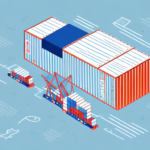Understanding FedEx Shipping Rates from the US to Australia in Pounds
Shipping goods overseas has become increasingly popular as businesses expand their reach. Shipping items from the United States to Australia involves many considerations, including understanding FedEx shipping rates. Shipping rates depend on various factors, such as package weight and size, destination, and shipping service. In this guide, we will cover everything you need to know about FedEx shipping rates from the US to Australia in pounds.
Factors that Affect FedEx Shipping Rates
The price of shipping depends on several factors:
- Package Weight and Size: Heavier and larger packages incur higher shipping costs.
- Distance: The longer the distance between the sender and the recipient, the higher the shipping rate.
- Shipping Service: Different FedEx services offer varying delivery timeframes and costs.
- Type of Package: Hazardous materials or fragile items may require special handling, increasing the cost.
- Package Value: High-value items might need additional insurance or security measures, impacting the rate.
- Seasonal Demand: Rates can fluctuate based on peak seasons like holidays, affecting availability and pricing.
Understanding these factors can help you estimate and manage your shipping costs effectively. For more detailed information, refer to FedEx's official shipping rates guide.
The Importance of Accurate Package Weight and Dimensions
Accurately determining the weight and dimensions of your package is crucial before shipping. Incorrect estimates can lead to additional fees or delivery delays. Here's why:
- Cost Calculation: Shipping costs are primarily based on package weight and size.
- Service Selection: Accurate dimensions ensure you choose the appropriate FedEx service.
- Safety: Properly sized packages are secured correctly during transit, reducing the risk of damage.
Investing time in accurately measuring and weighing your packages can save money and prevent potential issues during shipping.
How to Measure Package Weight and Dimensions Correctly
To ensure accurate measurements:
- Weighing: Use a reliable scale to measure the package's weight, including all packaging materials.
- Measuring: Measure the length, width, and height of the package using a tape measure or ruler. Round up to the nearest inch or centimeter as required by some shipping carriers.
Always check with your chosen carrier for specific measurement requirements to avoid additional fees or shipping delays.
Different Types of FedEx Shipping Services Available for US to Australia Shipments
FedEx offers a variety of shipping services tailored to different needs:
- FedEx International Priority: The fastest option, delivering within 1-3 business days with real-time tracking and customs clearance.
- FedEx International Economy: A more budget-friendly option, delivering within 5-7 business days with reliable tracking and customs services.
- FedEx International First: Offers the earliest delivery times available for international shipments, ideal for urgent deliveries.
Choosing the right service depends on your specific requirements for speed, cost, and reliability.
Which FedEx Shipping Service is Right for Your Business?
Selecting the appropriate FedEx shipping service involves considering several factors:
- Package Size and Weight: Heavier or larger packages may be more cost-effective with certain services.
- Time Sensitivity: Urgent shipments benefit from faster services like FedEx International Priority.
- Budget: Balancing cost versus delivery speed helps determine the best fit for your needs.
- Destination Specifics: For international deliveries, services like FedEx International First may offer added benefits.
Additionally, consider FedEx's extra services such as signature confirmation and insurance for added security. These can be invaluable for high-value or sensitive shipments.
How to Calculate Shipping Costs for Your US to Australia Shipments
To estimate your shipping costs, consider the following:
- Package Weight and Dimensions: Heavier and bulkier packages cost more to ship.
- Shipping Service: Faster services usually come at a higher price.
- Destination: Different regions may have varying rates.
- Type of Items: Fragile or hazardous items may incur additional fees.
- Customs and Import Fees: These vary based on the destination country's regulations and the value of the items shipped.
Utilize FedEx's shipping cost calculator to get an accurate estimate tailored to your specific shipment details.
Tips to Save on FedEx Shipping Costs from the US to Australia
Optimizing your shipping strategy can lead to significant cost savings:
- Consolidate Shipments: Combine multiple packages into one to reduce overall costs.
- Choose Slower Services: If time allows, opt for services like FedEx International Economy.
- Compare Shipping Providers: Regularly review and compare rates from different carriers to ensure you're getting the best deal.
- Utilize Discounts and Promotions: Take advantage of FedEx's volume shipping discounts and seasonal promotions.
- Proper Packaging: Use the right materials and follow FedEx’s packaging guidelines to avoid additional fees for oversized or poorly packed items.
Implementing these strategies can help manage and reduce your shipping expenses effectively.
Understanding Taxes and Duties for International Shipments from the US to Australia
When shipping internationally, it's essential to be aware of potential taxes and duties:
- Taxes and Duties: These are additional fees imposed by the destination country based on the value and type of goods shipped.
- FedEx Assistance: FedEx can provide estimates for these fees, helping businesses prepare financially.
- Recipient Responsibility: Typically, the recipient is responsible for paying any applicable taxes and duties upon delivery.
Research the specific customs regulations and fee structures for Australia to ensure compliance and avoid unexpected costs. Refer to the Australian customs website for detailed information.
Common Challenges Faced When Shipping from the US to Australia with FedEx
Shipping internationally with FedEx presents several challenges:
- Customs Clearance Delays: Incomplete or incorrect documentation can lead to shipments being held at customs.
- Package Damage: Improper packaging may result in damaged goods upon arrival.
- High Shipping Costs: International shipping can be expensive, especially for small businesses with limited budgets.
- Tracking Issues: Inconsistent tracking information can make it difficult to monitor shipments.
To mitigate these risks:
- Ensure all shipping documentation is accurate and complete.
- Use appropriate packaging materials and follow FedEx’s packing guidelines.
- Utilize shipping calculators to find the most cost-effective options.
- Communicate tracking information clearly with recipients.
How to Track and Manage Your FedEx Shipments from the US to Australia
Efficiently tracking and managing your shipments ensures smooth delivery:
- FedEx Website and Mobile App: Monitor your shipments in real-time and access tracking information on-the-go.
- Email Notifications: Receive updates on your shipment's status directly to your inbox.
- Customer Service: Reach out to FedEx support for personalized assistance and issue resolution.
- Shipment Alerts: Set up notifications for specific events like dispatch, transit, and delivery.
Additionally, FedEx offers services such as customs clearance support and international shipping documentation to streamline your shipping process. For more details, visit the FedEx Manage Your Shipment page.
Customer Reviews: Pros and Cons of Using FedEx for US to Australia Shipments
Understanding customer experiences can guide your shipping decisions:
Pros:
- Reliable Service: Many customers praise FedEx for its dependable delivery times and efficient tracking systems.
- Extensive Network: FedEx’s widespread presence in Australia facilitates easier sending and receiving of packages.
Cons:
- Package Damage: Some users report issues with items arriving damaged due to inadequate packaging.
- Unexpected Fees: Hidden costs related to customs or additional services can cause frustration.
- Customs Clearance Issues: Delays and complications during customs processing have been noted by some customers.
While FedEx offers robust shipping solutions, it's essential to consider both positive and negative feedback to make an informed decision. For a comprehensive view, explore customer testimonials on platforms like Trustpilot.
Conclusion
Shipping with FedEx from the US to Australia requires careful consideration of various factors, including accurate weight and dimension measurements, selecting the appropriate shipping service, and understanding additional fees like taxes and duties. Proper preparation and knowledge can lead to smooth and cost-effective shipments.
- Accurate Measurements: Ensure all package dimensions and weights are correctly measured to avoid extra costs.
- Service Selection: Choose the FedEx service that best aligns with your delivery speed, cost, and reliability needs.
- Compliance: Adhere to Australian customs regulations and prepare necessary documentation to prevent delays.
- Packaging: Use appropriate materials to protect your items and comply with FedEx’s packaging guidelines.
By following these guidelines and leveraging FedEx’s resources, businesses can effectively manage their international shipping operations, ensuring that goods reach their Australian destinations safely and efficiently. For more information on FedEx shipping solutions, visit the FedEx Shipping Services page.




















